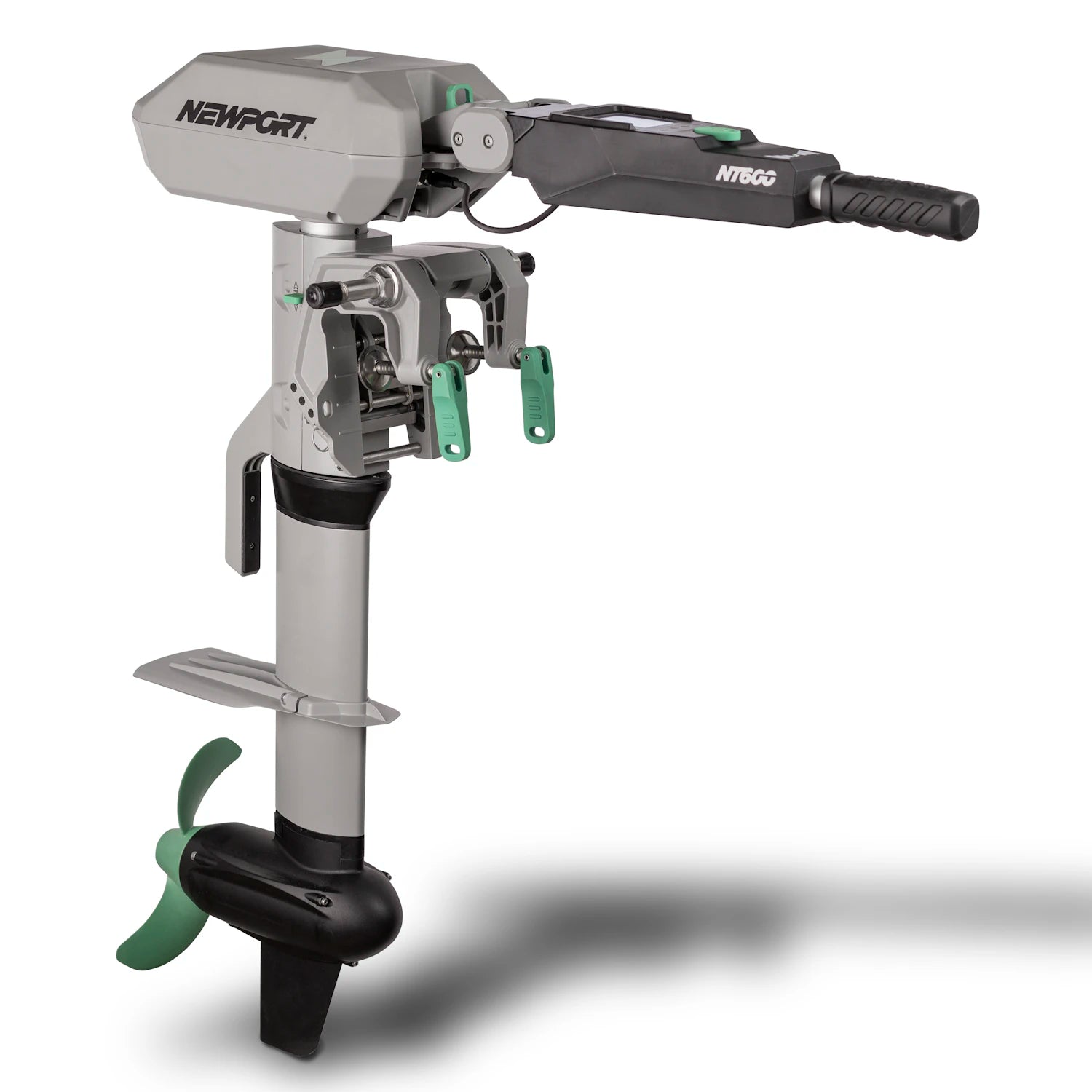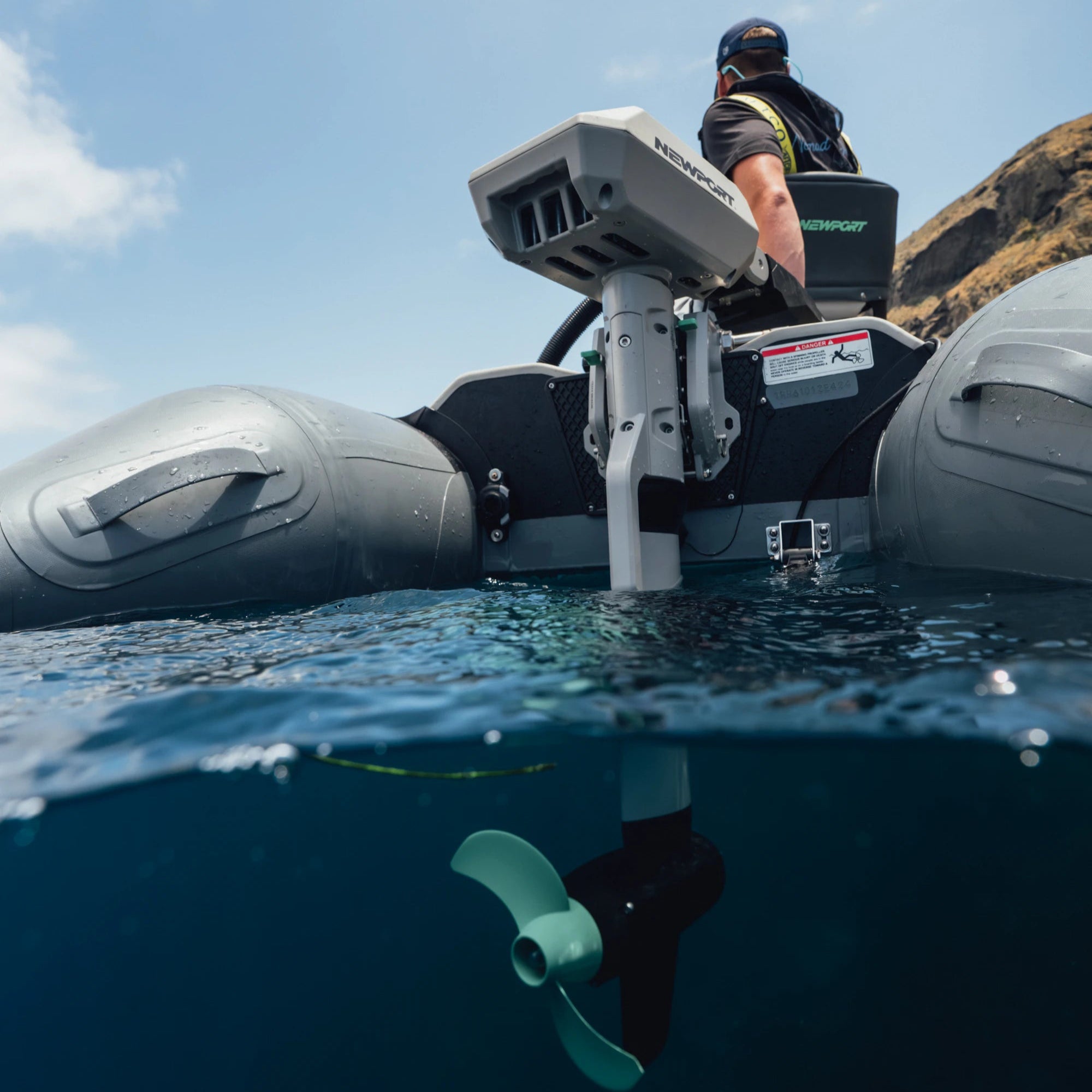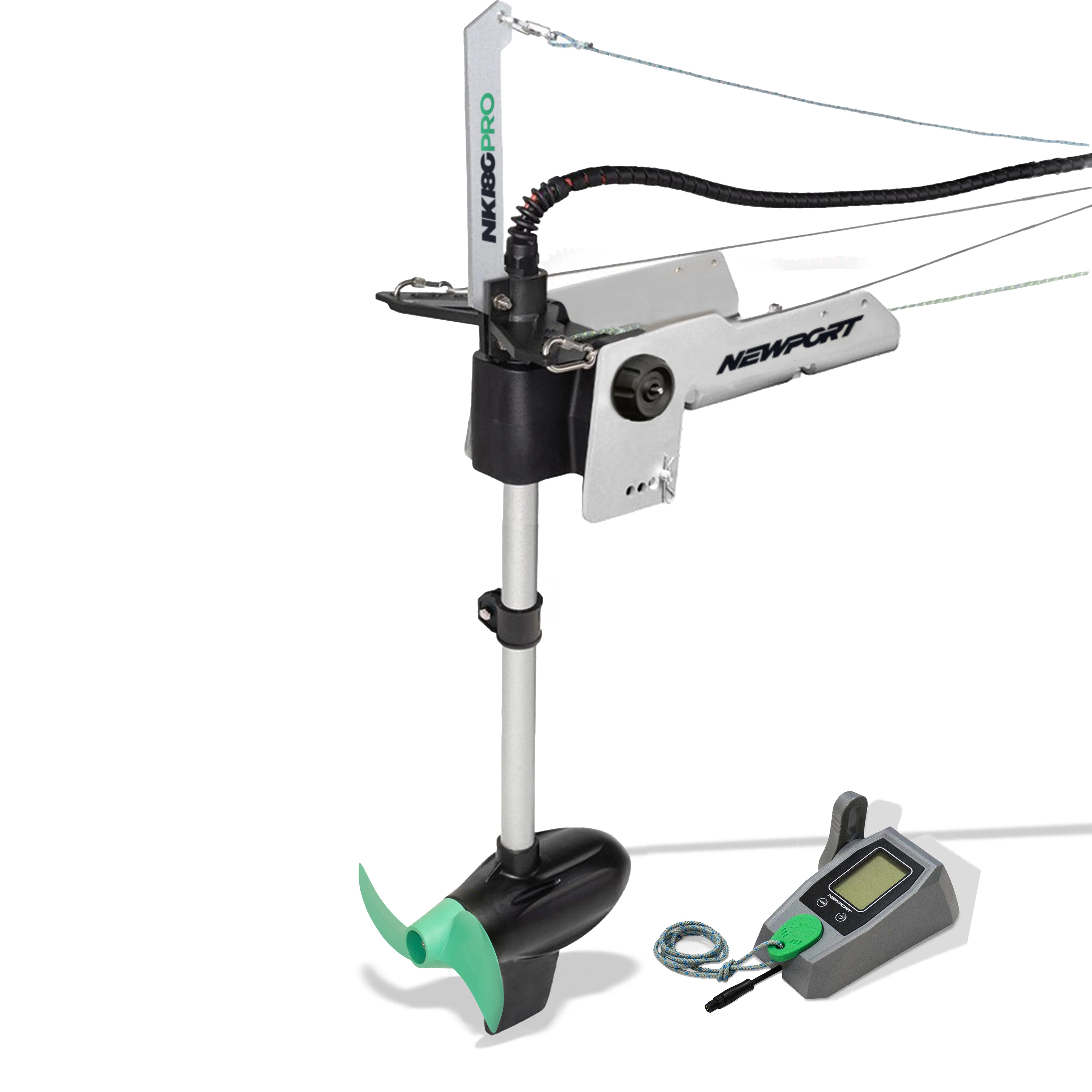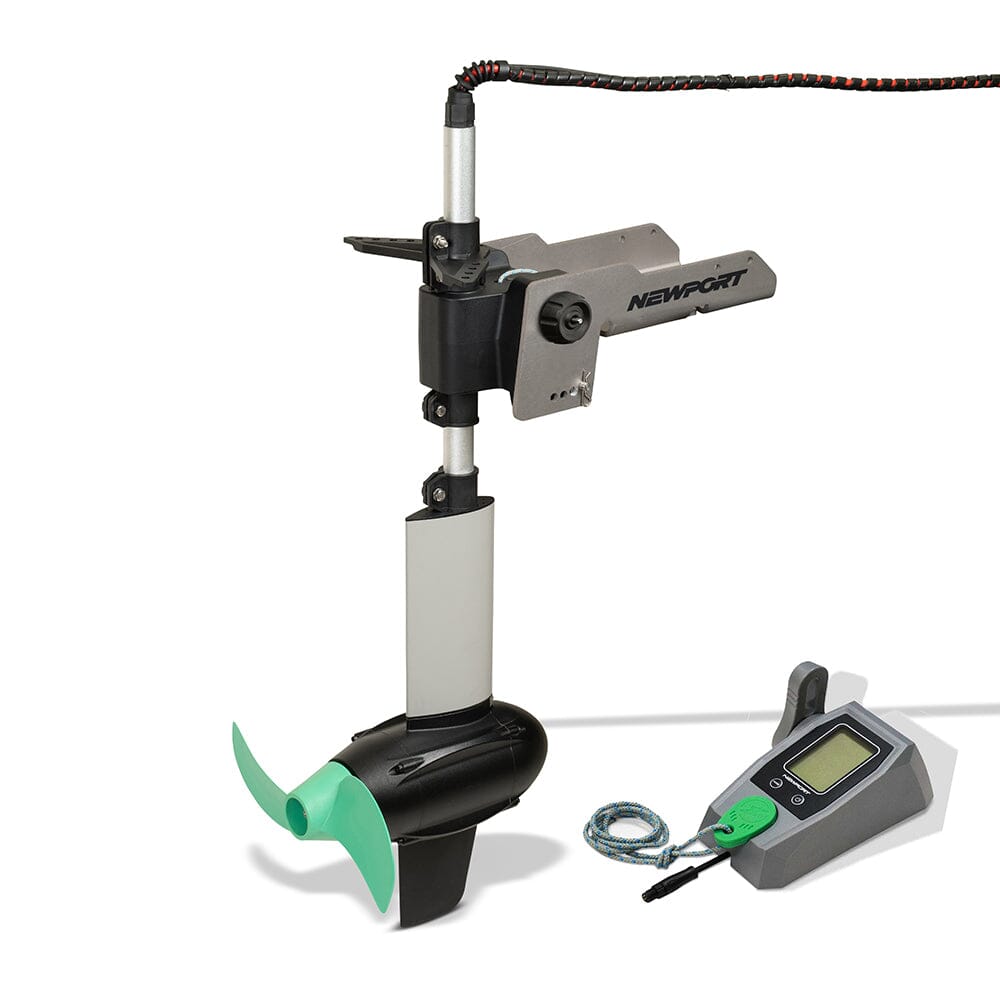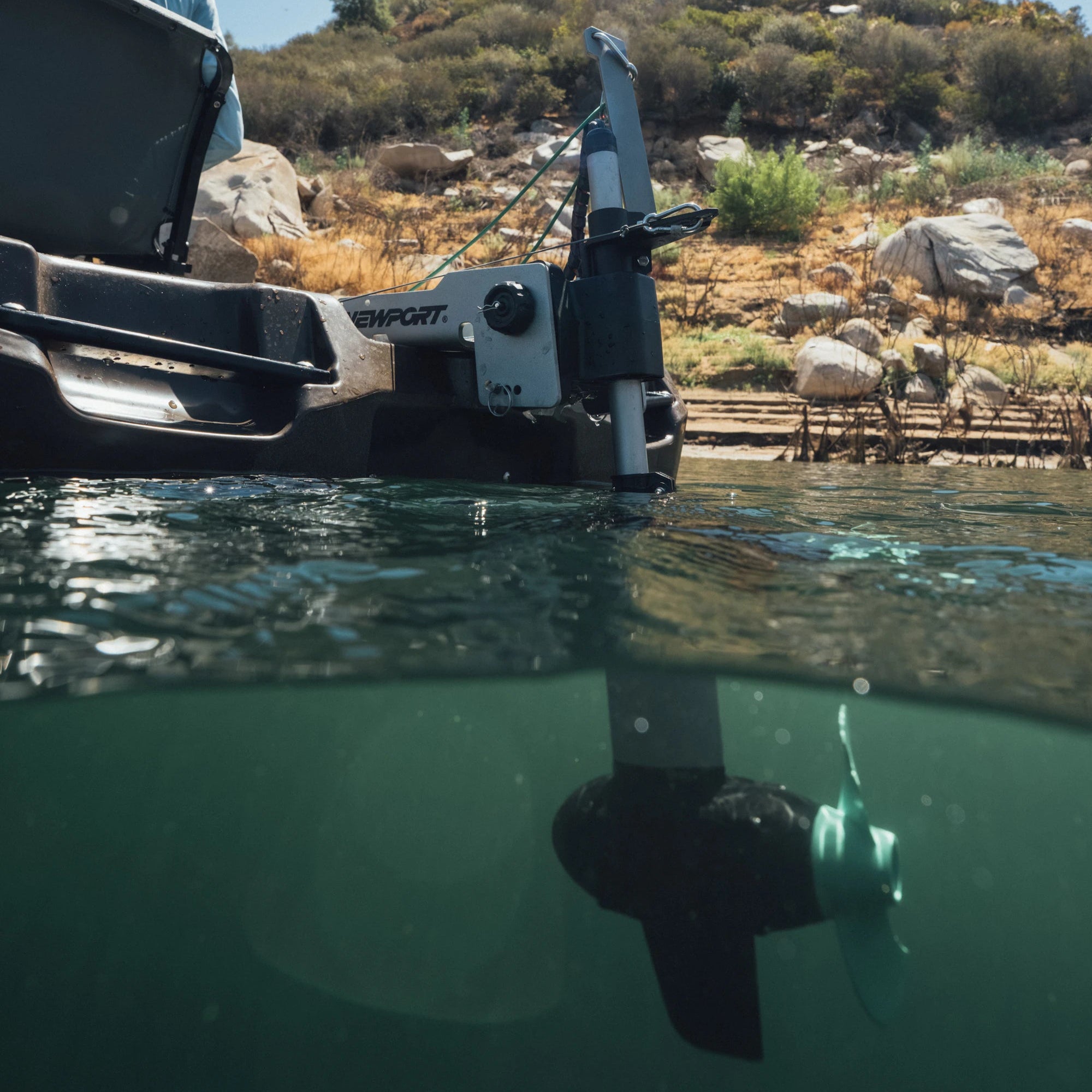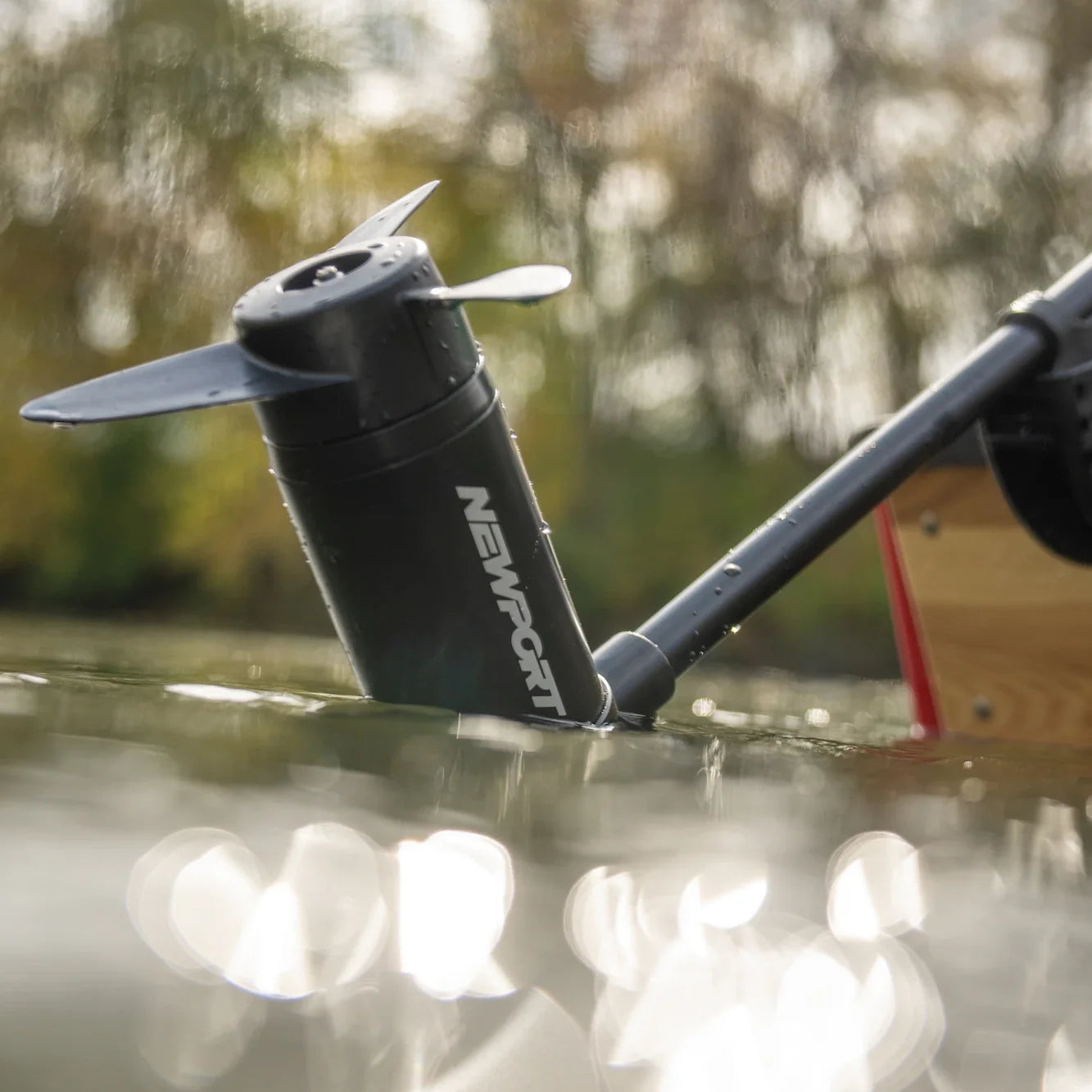Understanding Thrust vs Horsepower for Trolling Motors
One of the most common questions we hear from Newport anglers is:
“How does pounds of thrust compare to horsepower?” It’s a great question — and an important one if you’re trying to understand how your electric trolling motor stacks up to a traditional gas outboard.
It’s a great question — and an important one if you’re trying to understand how your electric trolling motor stacks up to a traditional gas outboard.
Thrust vs Horsepower — What’s the Difference?
-
Thrust (lbs): Measures static force — how much push your motor can generate at zero speed.
-
Horsepower (HP): Measures work over time — specifically, 550 foot-pounds of work per second.

Because one measures force and the other measures power over time, there’s no direct conversion between thrust and horsepower. However, we can estimate a motor’s power output using a simple formula.
How to Estimate Horsepower for Electric Motors
To approximate horsepower, multiply voltage by amp draw to get wattage, then divide by 746:
(Volts × Amps) ÷ 746 = Horsepower
That’s because 746 watts = 1 horsepower.
Example Horsepower Equivalents for Newport Trolling Motors
| Model | Voltage | Max Amp Draw | Approx. Wattage | Est. HP Equivalent |
|---|---|---|---|---|
| NV Series 36lb | 12V | 29A | 348W | 0.47 HP |
| NV Series 46lb | 12V | 40A | 480W | 0.64 HP |
| NV Series 55lb | 12V | 52A | 624W | 0.84 HP |
| X Series 62lb | 12V | 58A | 696W | 0.93 HP |
| L Series 86lb | 24V | 48A | 1152W | 1.54 HP |
These ratings help you visualize how much energy your trolling motor produces compared to a small gas outboard — but remember, electric motors deliver their torque instantly. That means faster response, smoother acceleration, and greater control in tight quarters.
The Takeaway
While there’s no direct horsepower conversion for thrust, this formula gives you a reliable reference point.

At Newport, our trolling motors — from the trusted NV Series to the upgraded X and L Series — are designed for anglers who want quiet, efficient, and powerful performance without the noise, fumes, or maintenance of gas.

